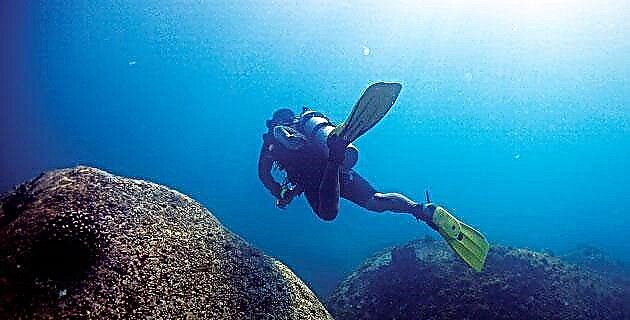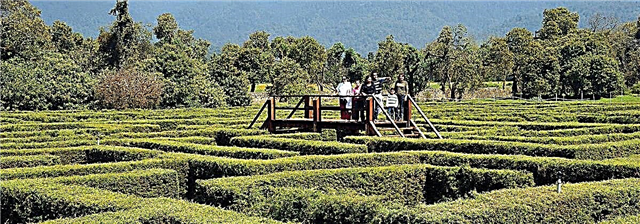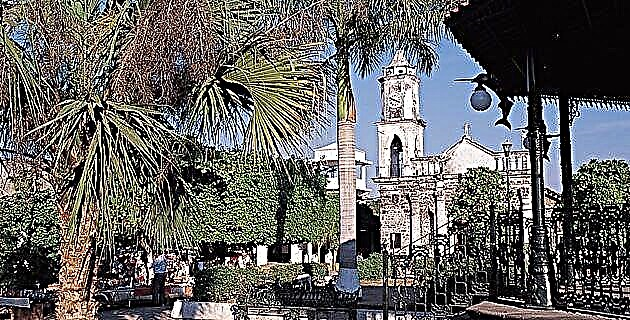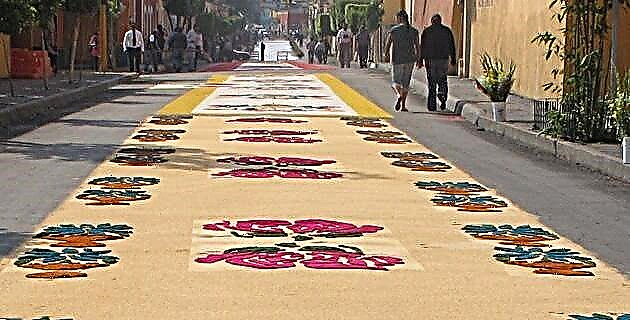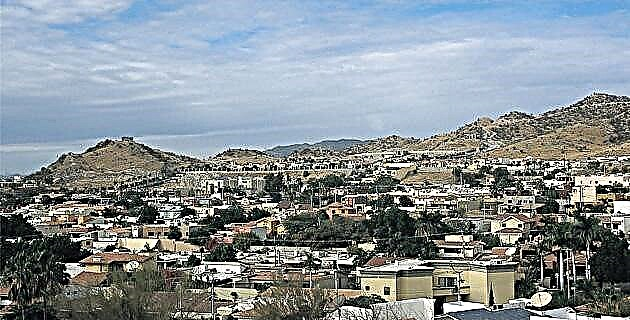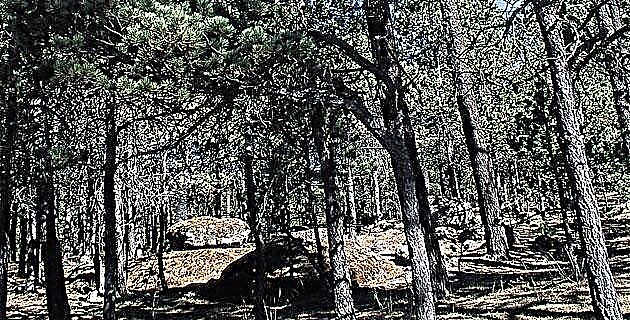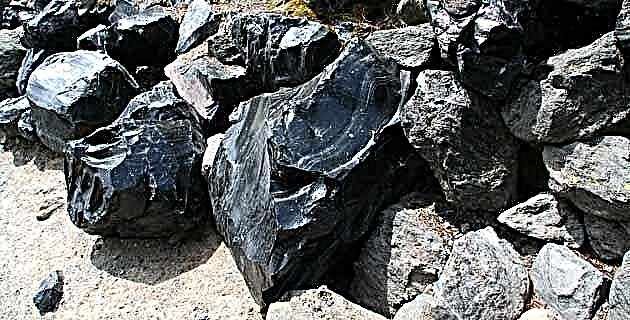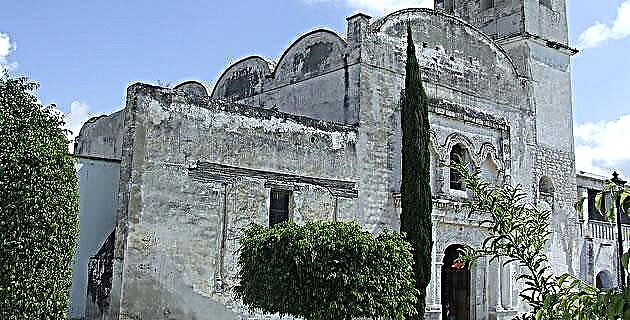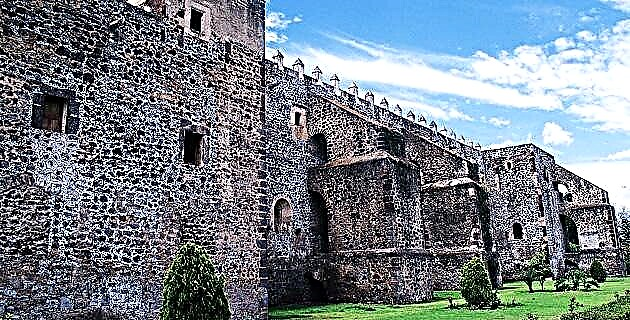
The missionaries were the first Spaniards to arrive in the new territory in order to evangelize. In what is today Guanajuato a rich architectural heritage product of his work is preserved.
After the conquest of Mexico, which occurred around the second decade of the 16th century, some of the first Spaniards to arrive in the new territory were the missionaries of the different religious orders, who, with the cross in one hand and the sword in the other They came with the purpose of converting to Christianity the thousands of indigenous people who populated the newly conquered land. Among the first orders to arrive in what we now know as Mexico were the Franciscans (1523), the Dominicans (1526), and the Augustinians (1533).
Thus, in the second half of the sixteenth century, with the consent of the King of Spain and the Pope in turn, the missionaries undertook the task of raising, always with the "free" indigenous labor, a large number of convents, temples and haciendas that with the passage of time and after countless vicissitudes became the rich architectural heritage of our current Mexico.
This type of construction was generalized throughout the length and breadth of New Spain, and the state of Guanajuato could not be the exception, so in this legendary territory it is still possible to admire beautiful conventual complexes that, with foundations of eternity, still surprise own and strangers.
Guanajuato convent
Trying to trace a "route of convents" in the current state of Guanajuato, we can begin our tour in the capital city, Guanajuato, where you can visit the temple and former convent of the Company of Jesus, a building dating from 1732 and in 1774 it was turned into a school; at present it only conserves its temple and its lower and upper cloisters, which house the School of Foreign Relations of the University of Guanajuato.
Towards the outskirts of the city, in the neighboring town of Valenciana, we find the magnificent convent complex of San Cayetano, better known simply as Valenciana. This religious complex is world famous for its magnificent church from 1788, which is considered one of the most notable examples of Mexican Churrigueresque. Its majestic façade announces the sumptuousness of its interior, with three splendid altarpieces in a marked Baroque style.
Unfortunately for photography buffs, taking photos inside is not allowed. As for the adjoining cloister, in 1867 it housed the Colegio de Santa María, the first in America where Latin, Greek and Hebrew were taught simultaneously. In 1962 this cloister passed into the hands of the state government, which assigned it to the University; restored by it, since 1968 it is the headquarters of the School of Philosophy, Letters and History.
From Guanajuato we move to the oil city of Salamanca, just 66 km away, to admire the beautiful former Augustinian convent of San Juan de Sahagún, better known as the former convent of San Agustín. Built between 1642 and 1700, it still preserves almost all of its original complex, with the exception of the facade of the temple, which was mutilated in past decades.
The interior of this one is of an exquisite sumptuousness, and in its eleven gilded lateral altarpieces scenes of the life of Biblical personages are observed. It should be mentioned that in the sacristy a large number of paintings from the 17th, 18th and 19th centuries are preserved, as well as a unique table for religious service.
Regarding its cloisters, we can mention that the smaller one, in Herrerian style, is contemporary with the temple, and that the larger one was built between 1750-1761 and is of a decided Baroque style (see Unknown Mexico No. 211).
With the excellent well-being that this visit leaves us, we head towards the town of Yuriria, where we will visit the most famous convent complex in Guanajuato, that of San Pablo de Yuririapúndaro, founded in 1550 by the Augustinian monks. From the moment we enter the lower cloister, we are surprised by the majesty of its corridors, decorated with beautiful Gothic ribs, and its walls adorned with frescoed biblical scenes.
In the upper part we can visit the cells one by one in which, suddenly, we feel that an Augustinian monk is going to appear praying for his eternal rest, next to one of the windows through which we can see the lagoon. This whole complex was partially destroyed by a raging fire in 1815, but fortunately it could be restored in the same century. It is currently guarded by personnel of the National Institute of Anthropology and History and functions as a museum.
From Yuriria we take the road to the southeast, until we reach the city of Acámbaro, where, among many other things, we will enter the Franciscan complex of Santa María de Gracia, in a baroque style, erected between the 17th and 18th centuries. The arcade of the cloister is made up of semicircular arches decorated with beautiful figures in high relief that represent various characters of the Catholic Church.
After having visited this wonderful convent complex and well supplied with the famous "Acámbaro bread", we headed towards the land of the guavas, Salvatierra, where we will have the opportunity to meet three more groups.
Among its many tourist attractions, the city of Salvatierra offers us the convent of San Francisco, a 17th century building that still has its temple and cloister, with a patio adorned by a fountain with a sculpture of San Francisco de Asís. Here it is also convenient to visit the temple and convent of the Capuchinas, one of the few examples of female religious architecture in the state. Its construction dates from the end of the 18th century and its exterior image resembles a small fortress.
Finally, we go to the temple and convent of Carmen, which was built in the seventeenth century and whose cloister has been mutilated and built, in its place, a shopping center.
Another place where we can find several religious groups is the city of Celaya, just 37 km north of Salvatierra; In this place, famous for its exquisite boxes, it is recommended to visit the temple and convent of Carmen, a masterpiece of the Guanajuato architect Eduardo Tresguerras, built between 1802 and 1807, and which today is a neoclassical sample of great simplicity and symbol of Celayense architecture.
Inside the temple you can also admire the pictorial work of Tresguerras. The convent has a courtyard with a quarry fountain in the center and a perimeter adorned by lowered arches on paneled columns. It is still inhabited by Carmelite priests, who do not allow taking pictures of the interior of the cloister. The whole complex is surrounded by an atrial wall with an iron grill.
The temple and convent of San Francisco is located next to the popular “ball of water” (a huge spherical tank that stores drinking water). The construction of the current temple began in 1683 and its façade was rebuilt (along with its altars) by the architect Tresguerras between 1810 and 1820. The façade of the convent has two levels, with pilasters decorated with gargoyles; the interior patio is delimited by a semicircular arcade on molded pilasters, and those on the second level are topped by faces that stand out from among the foliage.
Another set that deserves to be seen is that of San Agustín, whose temple began to be built in 1609 in a Plateresque style with a certain Moorish reminiscence; the cloister, contemporary with the temple, is made of quarry. The building was the seat of the municipal jail until 1961 and currently houses the House of Culture of Celaya.
Still with the sweet taste in our mouths that the cajeta and these magnificent convents left us, we headed north again to arrive, after 52 km of travel, to the colonial city of San Miguel de Allende, famous for its unique New Spanish architecture. The first point to visit is the temple and former convent of the Immaculate Conception, in whose temple you can admire a monumental collection of paintings by the famous artist Rodríguez Juárez; It is currently the headquarters of the Cultural Institute "El Nigromante", where painting, drawing and sculpture classes are taught.
From here you have to go to the complex of San Francisco, consisting of the Chapel of the Third Order, the temple of San Francisco and the conventual cloister, which form a busy square. Although this entire architectural complex was not built simultaneously, it is said to belong to the 18th century; the arches of the cloister denote a strong Baroque influence but, unfortunately, it was left unfinished. You can visit it asking for authorization at the notary's office on the site
Another building that is well worth visiting in San Miguel is that of the San Felipe Neri oratory, which although it is not actually a convent complex, has a certain resemblance to these. The church of San Felipe Neri was built in 1712 by the bachelor Juan Antonio Pérez de Espinoza, and inside you can admire beautiful neoclassical altars and paintings by Miguel Cabrera; the exterior is in a sober Plateresque style.
With this religious complex we conclude our tour of the "route of convents" of the state of Guanajuato, which highlights the importance of the establishment of secular orders in the Guanajuato territory, and provides us with one more pretext to visit this wonderful and historical Mexican state, because we must not forget that Guanajuato… is something else!
Structure of convents
First of all, we can establish that the conventual complexes had certain characteristic elements. The first of them was a huge courtyard called a conventual atrium, generally square or rectangular in shape, with an imposing crenellated wall that surrounded it and a door located in the same axis as the access to the church. In addition to this main door, the atriums had other lateral accesses. Between the main entrance and the body of the church was the atrial cross, and in the corners of the atrium there were some small chapels called posas chapels, which were used to place the image of the Blessed Sacrament during processions.
Most of the conventual complexes also had an open chapel, where the priests gave the catechism and the Eucharistic celebration to the natives; These chapels are considered one of the New World's most original contributions to religious architecture.
The most important part is the temple, which generally consists of a single nave with a rectangular floor plan and a circular or trapezoidal apse; Its magnificent façades are, in many cases, the main element of the temple. Usually on the south side of the temple the convent itself is located, whose cloisters, always built in later stages to the atrium and the chapels, constitute the most evocative part of the whole.
The arches, characteristic of all New Spain convents, are made up of semi-circular or lowered arches, and their finishes show the influence of Gothic, Plateresque and, in some cases, Mudejar styles. The cloister works as a means of communication between the various conventual dependencies, such as the depths room (the most spacious), the refectory, the sacristy, the library, the kitchen and the garden.
A large staircase connects the lower and upper cloisters, where the small and austere cells of the priests are located, all of them connected by a long peripheral corridor.
In general, these are the architectural elements that characterized those voluminous conventual complexes established by the religious orders to evangelize the Mesoamerican indigenous peoples.

